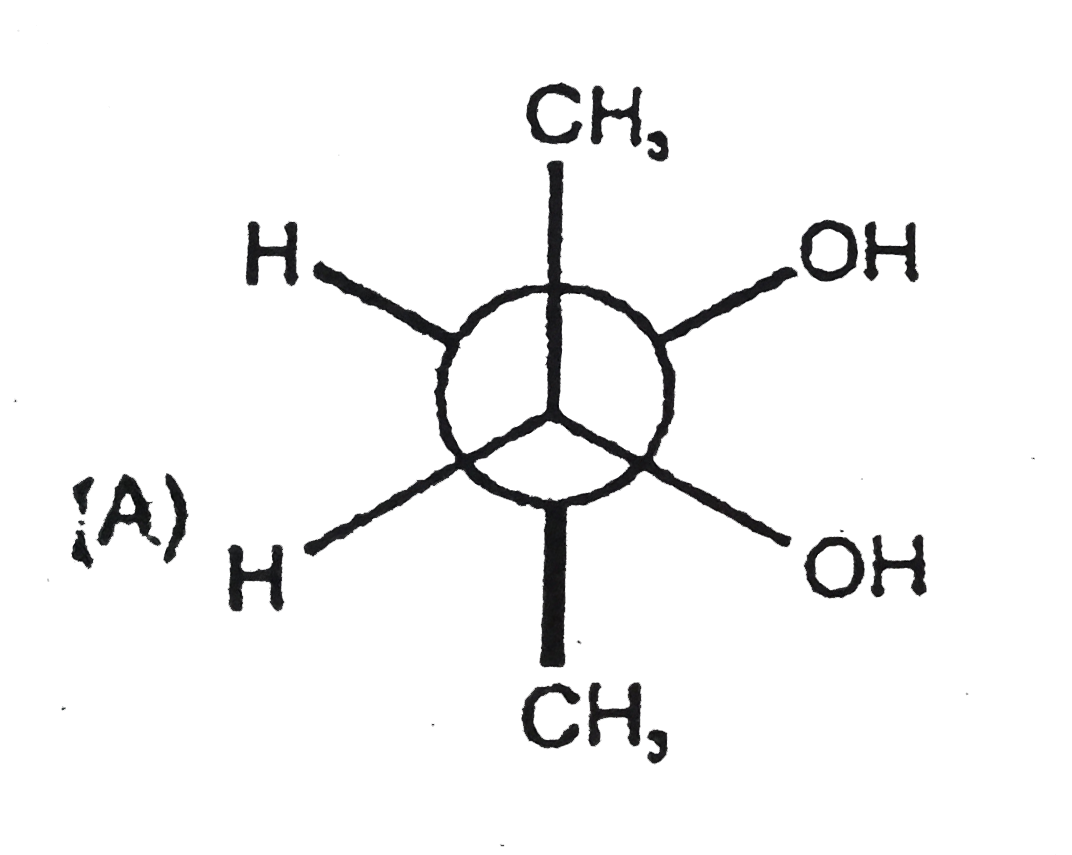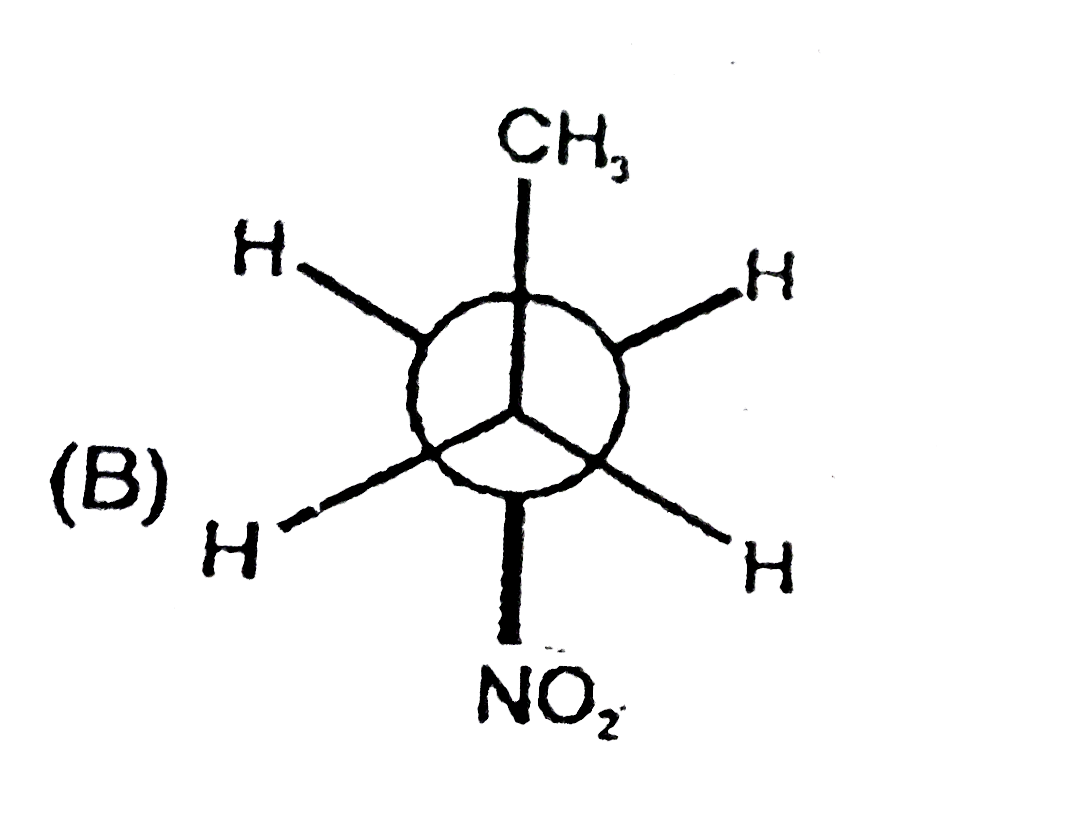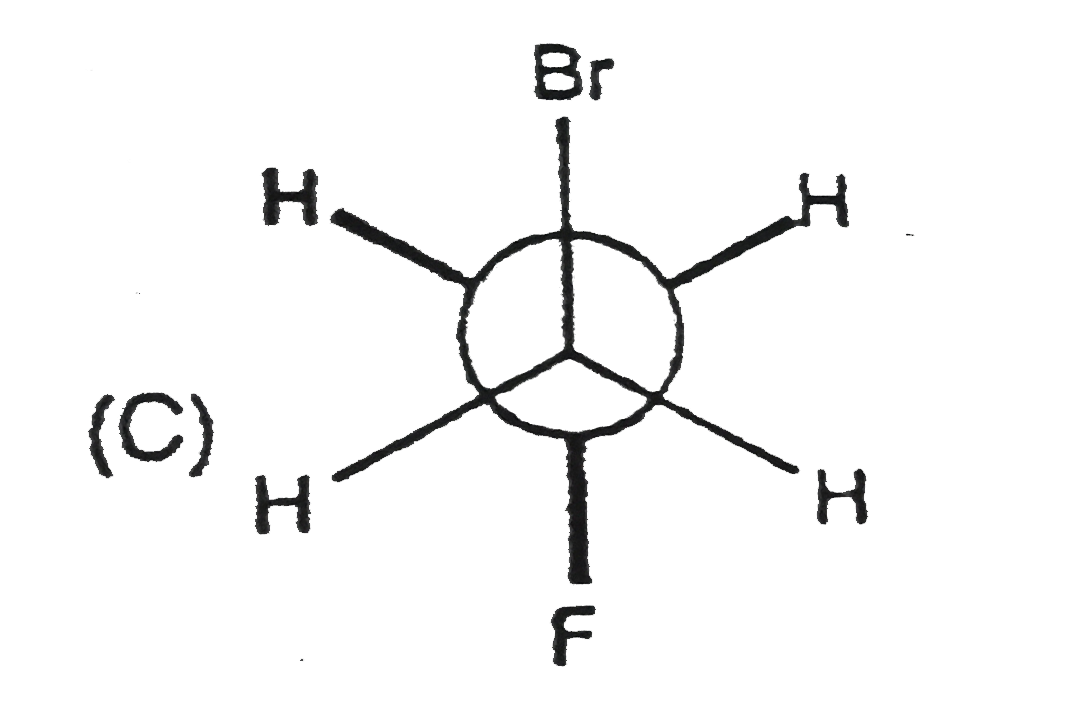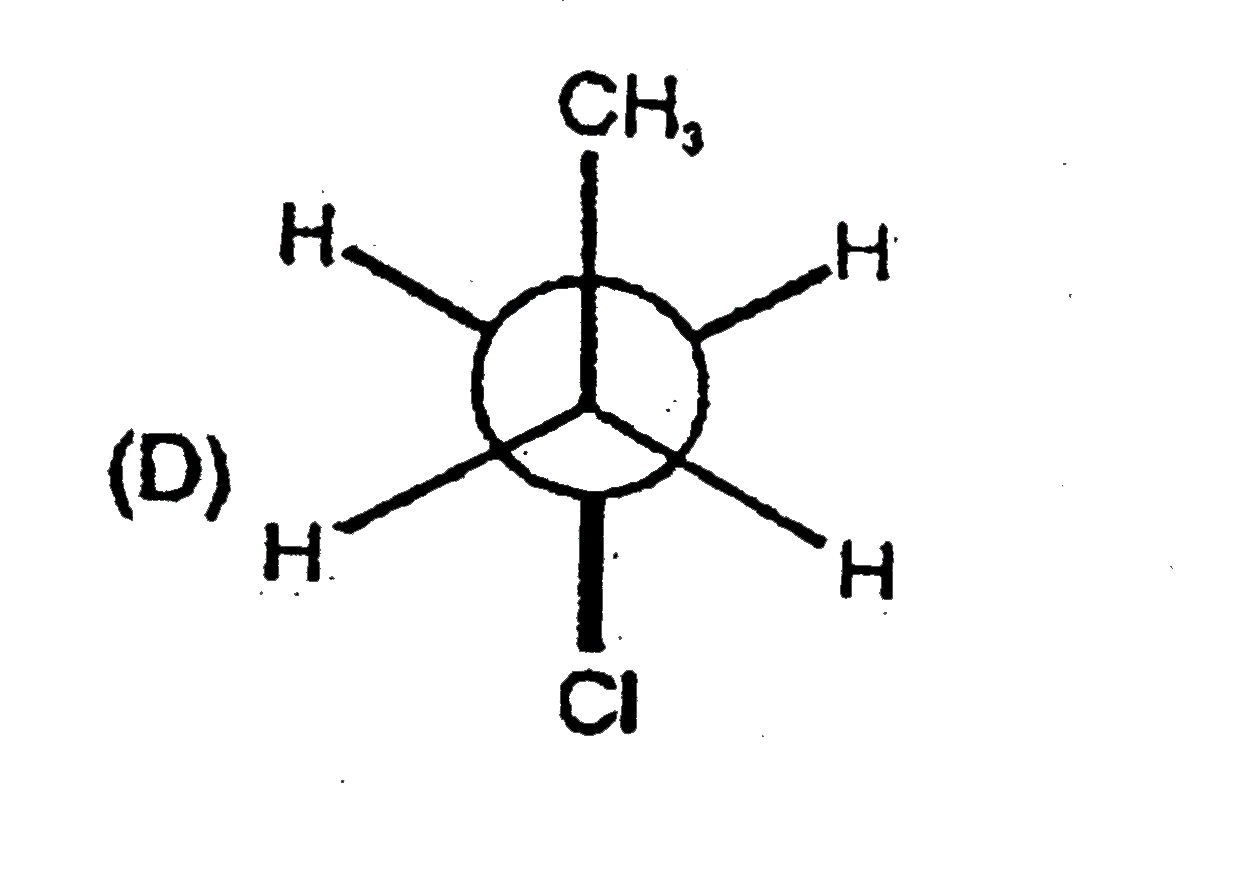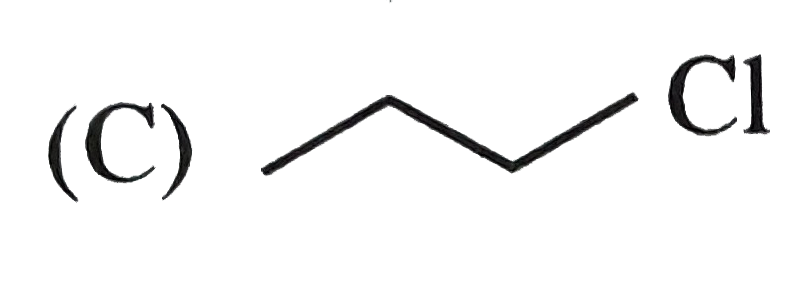Explore topic-wise InterviewSolutions in .
This section includes InterviewSolutions, each offering curated multiple-choice questions to sharpen your knowledge and support exam preparation. Choose a topic below to get started.
| 15801. |
Which among the following gas will be adsorbed most readily by activated charcoal? |
|
Answer» `SO_2(G)` |
|
| 15802. |
Transition elements get hydrolysed because they have |
|
Answer» VACANT ORBITALS |
|
| 15803. |
Which one of the following is a natural rubber? |
|
Answer» Buna-S |
|
| 15804. |
Which of the following ligand can exhibit linkage isomerism? |
|
Answer» `CN^(-)` |
|
| 15805. |
Which of the following is least polar and most stable conformer as compared to its other conformers. |
|
Answer»

|
|
| 15806. |
Which of the following are examples of synthetic detergents ? |
|
Answer» `CH_3(CH_2)_(16)CH_2OSO_3N_9``CH_3(CH_2)_(16)COO(CH_2CH_2O)_8CH_2CH_2OH` |
|
| 15807. |
What is crystal field splitting energy? |
| Answer» Solution :In a transition metal ion, all the five d orbitals are DEGENERATE but when it is INVOLVED in a COMPLEX FORMATION, the degeneracy is split. This is called crystal field splitting. | |
| 15808. |
Which ofthe following statements concerning transition metal is false ? |
|
Answer» They are all METALS. |
|
| 15809. |
Which of the following statements (s) is/are correct for group-II metals |
|
Answer» On decreasingdown the group, the lattice energy as WELL as hydration energy decreases |
|
| 15811. |
Which of the following carbocations is expected to be most stable? |
|
Answer»
|
|
| 15812. |
The velocity of electron in the hydrogen atom is 2.2xx10^6 m/s. Thede Broglie wavelength for this electron is: |
|
Answer» 33 nm |
|
| 15813. |
Which of the following compounds will dissolve in an alkali solution after it undergoes reaction with Hinsberg's reagent ? |
|
Answer» `CH_(3)CH_(2)` |
|
| 15814. |
Which of the following alkyl halides is most reactive in the Williamson reaction ? |
|
Answer»
|
|
| 15815. |
Which of the following compounds are more reactive towards NaOH. |
|
Answer» `CH_3CH_2Cl` |
|
| 15816. |
Write the structural formula of 1, 1 - dimethoxy ethane. How is it prepared from ethanal? |
Answer» SOLUTION : Preparation : When ACETALDEHYDE is TREATED with 2 EQUIVALENT of methanol in presence of HCl, 1, 1, - dimethoxy ethane is obtained. 
|
|
| 15817. |
When H_(2)S is added to acidic dichromate solution, the colour of the solution changes to ….. |
|
Answer» Yellow |
|
| 15818. |
Which of the following is not usefull for the synthesis of ether ? |
|
Answer»
|
|
| 15819. |
The value of Delta_fG^@ for formation of Cr_2O_3 is -540 kJ mol^(-1) and that of Al_2O_3 is -827 kJ mol^(-1). Is reduction of Cr_2O_3 possible with Al ? |
|
Answer» Solution :The two equations are : (i) `4//3Al(s) + O_2(g)to 2//3Al_2O_3(s),Delta_fG^@ = - 827 kJ MOL^(-1)` (ii) `4//3Cr(s) + O_2(g) to 2//3Cr_2O(s) : Delta_fG^@ = - 540 kJ mol^(-1)` SUBTRACTING Eq. (ii) from Eq. (i), we get `4//3 Al(s) + 2//3 Cr_2O_3(s) to 2//3 Al_2O_3 (s) + 4//3 CR(s): Delta_rG^@ = - 287 kJ mol^(-1)` Since `Delta_rG^@` of the combined redox reaction is negative, therefore, REDUCTION of `Cr_2O_3` by Al is POSSIBLE. |
|
| 15820. |
What happens to freezing point of benzene when naphthalene is added |
|
Answer» Increases |
|
| 15821. |
What is the mole fraction of a solute in 2.5 m aqeous solution? |
|
Answer» Solution :2.5 m aqueous solution means 2.5 moles of the SOLUTE are present in 1000 g of WATER, i.e., `"Moles of solute = 2.5,Moles of solvent"=(1000)/(18)=55.55` `THEREFORE"Moles FRACTION of solute in the solution"=(2.5)/(2.5+55.55)=0.043` |
|
| 15822. |
Which of the following represents Avogadro's hypothesis ? |
|
Answer» GASES react TOGETHER in volumes which bear a simple RATIO to ONE another |
|
| 15823. |
Which of the following reagents turns white precipitate of AgCl yellow ? |
|
Answer» `NaNO_(3)` |
|
| 15824. |
What is rectified spirit? |
| Answer» Solution :It CONTAINS `95.6%C_(2)H_(5)OH` and rest `CH_(3)OH` or pyridine. | |
| 15825. |
The number of asymmetric carbon atoms present in glucose is ______. |
|
Answer» 2-chloro butane |
|
| 15826. |
What will be the effect of addition of organic material on water |
|
Answer» COD REMAIN UNAFFECTED |
|
| 15827. |
Write the names of the monomers of the following polymers: [--overset(O)overset(||)C-(CH_2)_5 - overset(H)overset(|)N --]_n |
| Answer» SOLUTION :CAPROLACTAM | |
| 15828. |
What are anionic detergents? Give an example. |
|
Answer» Solution :Anionic Detergents are SODIUM salts of sulphonated long chain ALCHOLS or HYDROCARBONS Eg : Sodium Laurylsulphate |
|
| 15829. |
Write the structures of the major organic product in each of the following: CH_3underset(Br)underset(|)(CHCH_2)CH_3 + NaOH overset("water")(rarr). |
| Answer» SOLUTION :`CH_3-UNDERSET(OH)underset(|)(CH)-CH_2-CH_3` | |
| 15830. |
Variable valency is a general feature of _____ elements: |
|
Answer» s-block |
|
| 15831. |
What happens when a freshly precipitated Fe(OH)_(3) is shaken with a little amount of dilute solution of FeCl_(3) ? |
| Answer» Solution : `Fe(OH)_(3)` is CONVERTED into COLLOIDALS state by preferential adosption of `Fe^(3+)`IONS | |
| 15832. |
Which of the following electrolytes will be most effective ion in the coagulation of gold sol |
|
Answer» `NaNO_3` |
|
| 15833. |
Which alkyl halide from the following pairs would you expect to react more rapidly by S_(N)2 mechanism ? Explain your answer. CH_(3)CH_(2)CH_(2)CH_(2) " or " CH_(3)CH_(2) - underset(Br)underset(|)CH - CH_(3) (ii) CH_(3)CH_(2)underset(Br)underset(|)CHCH_(3)" or " H_(3)C - underset(CH_(3))underset(|)overset(CH_(3))overset(|)C-Br (iii) CH_(3)underset(CH_(3))underset(|)CHCH_(2)CH_(2) Br " or " CH_(3)CH_(2)underset(CH_(3))underset(|)CHCH_(2)Br |
|
Answer» Solution :(i) `CH_(3)CH_(2)CH_(2)Br " isa " 1^(@) " ALKYL halide while " CH_(3)CH_(2) - CHBR - CH_(3) " is a " 2^(@) ` alkyl halide . There willbe more steric hindrance in `2^(@)` alkyl halides than in `1^(@) ` alkyl halides. Therefore, `CH_(3), CH_(2)CH_(2) Br` will react faster than `CH_(3)CH_(2) - CHBr - CH_(3) " in " S_(N) 2` reaction . (ii) `CH_(3)CH_(2) - CHBr - CH_(3) " is " 2^(@) ` alkyl halide while `(CH_(3))_(3)C - Br " is " 3^(@) ` alkyl halide . Due to lesser steric hindrance, `2^(@) ` alkyl halides react faster than `3^(@)` alkyl halides. Therefore, `CH_(3)CH_(2) - CHBr - CH_(3) ` will reacter than `(CH_(3))_(3)CBr " in " S_(N) 2` reaction . (iii) `overset(4)CH_(3) - UNDERSET(I)underset(CH_(3))underset(|)overset(3)(CH) - overset(2)CH_(2)overset(1)CH_(2)Br "" overset(4)CH_(3)overset(3)CH_(2)- underset(II)underset(CH_(3))underset(|)overset(2)(CH) - overset(1)CH_(2)Br` Both I and II are `1^(@) ` alkyl halides . But in alkyl halide (II) , the `CH_(3) " group at " C_(2) `is CLOSER to the Br atom while in alkyl halide (I) , the `CH_(3)" group at " C_(3)` is little away from the Br atom. As a result , alkylhalide (II) will suffer greater steric hindrance than alkyl halide (I) . Therefore , `(CH_(3))_(2) CHCH_(2)CH_(2) Br` willreact faster than `CH_(3)CH_(2)CH(CH_(3))Br " in " S_(N)2` reaction . |
|
| 15834. |
Which of the following is an example of electrophilic substitution? |
|
Answer» diazotisation |
|
| 15836. |
Transition elements are d - block elements and inner transition elements are f-block elements. Name a transition metal compound and write one use of it. |
| Answer» SOLUTION :`KMnO_4` It is USED as an .OXIDISING AGENT in the LABORATORY | |
| 15838. |
Whichone of the followingis levorotatory ? |
|
Answer» `H-UNDERSET(CH_(2)OH)underset(|)overset(CHO)overset(|)(C) - OH` |
|
| 15839. |
When HNO_3 reacts with metals, nitrogen dioxide is usually evolved if the acid is: |
|
Answer» |
|
| 15840. |
The vapour pressure of water is 12.3 kPa at 300 K. Calculate the vapour pressure of 1 molalsolution of a non-volatile solute in it |
|
Answer» Solution :1 MOLAL solution CONTAINS 1 mol of the SOLUTE in 1 kg of water ` therefore ` Mole fraction of solute =`(1)/(1 + (1000//18)) = (1)/(1 + 55.5)= 0.0177` Applying Raoult.s LAW, we have `(p^0 -p_x)/(p^0)- x_2 " or " (12.3 -p_s)/(12.3) = 0.0177` `p_s = 12.08 kPa` |
|
| 15841. |
Which of the followingis correct for N_(2) triple bond |
|
Answer» 3s |
|
| 15842. |
Which of the following colour is imparted by alizarin dye in the presence of Cr^(3+) ion? |
|
Answer» |
|
| 15843. |
To neutralise completely 20 ml of 0.1 M aqueous solution of phosphorousacid (H_3PO_3), the volume of 0.1 M aqueous KOH solution required is : |
|
Answer» Solution :`H_3PO_3 ` is dibasic acid `H_3PO_3 + 2KOH to K_2HPO_3 + 2H_2O` `(M_1V_1)/(n_1)=(M_2V_2)/(n_2)` `(0.1 xx 20)/(1) = (0.1 xx V_2)/(2)` `V_2=(0.1 xx 20 x 2)/(0.1) = 40` ml |
|
| 15844. |
What is the formula ofa compound in which the element Y form ccp lattice and atoms of X occupy (2)/(3) rd of tetrahedral voids ? |
|
Answer» SOLUTION :`"Number of ELEMENT"Y=n` `"Number of element "X=2nxx(2)/(3)` `"As number of tetrahedral void = 2n"` `X:Y =(4n)/(3):n` `"FORMULA "=X_(4)Y_(3)` |
|
| 15845. |
Which one of the following ions exhibits d-d tranistion and paramagnetism as well ? |
|
Answer» `MnO_(4)^(-)` |
|
| 15846. |
Whichamongthefollowing carbides on hydrolysis give alkane ? |
| Answer» Answer :A | |
| 15847. |
What is the industrial use of acrylonitrile? |
| Answer» Solution : It is USED in the MANUFACTURE of NITRILE rubbers and TEXTILES. | |
| 15848. |
What is the difference in steric number (bp + lp) of anionic and cationic part of I_(2) (s) : |
|
Answer» 5 Steric no. 45 |
|
| 15849. |
Which of the following is the strongest acid? |
|
Answer» `ClO_(2)(OH)` |
|
| 15850. |
Toluene, when treated with Br_2//Fe , gives p-bromotoluene as the major product, because the CH_3group |
|
Answer» is para DIRECTING |
|
